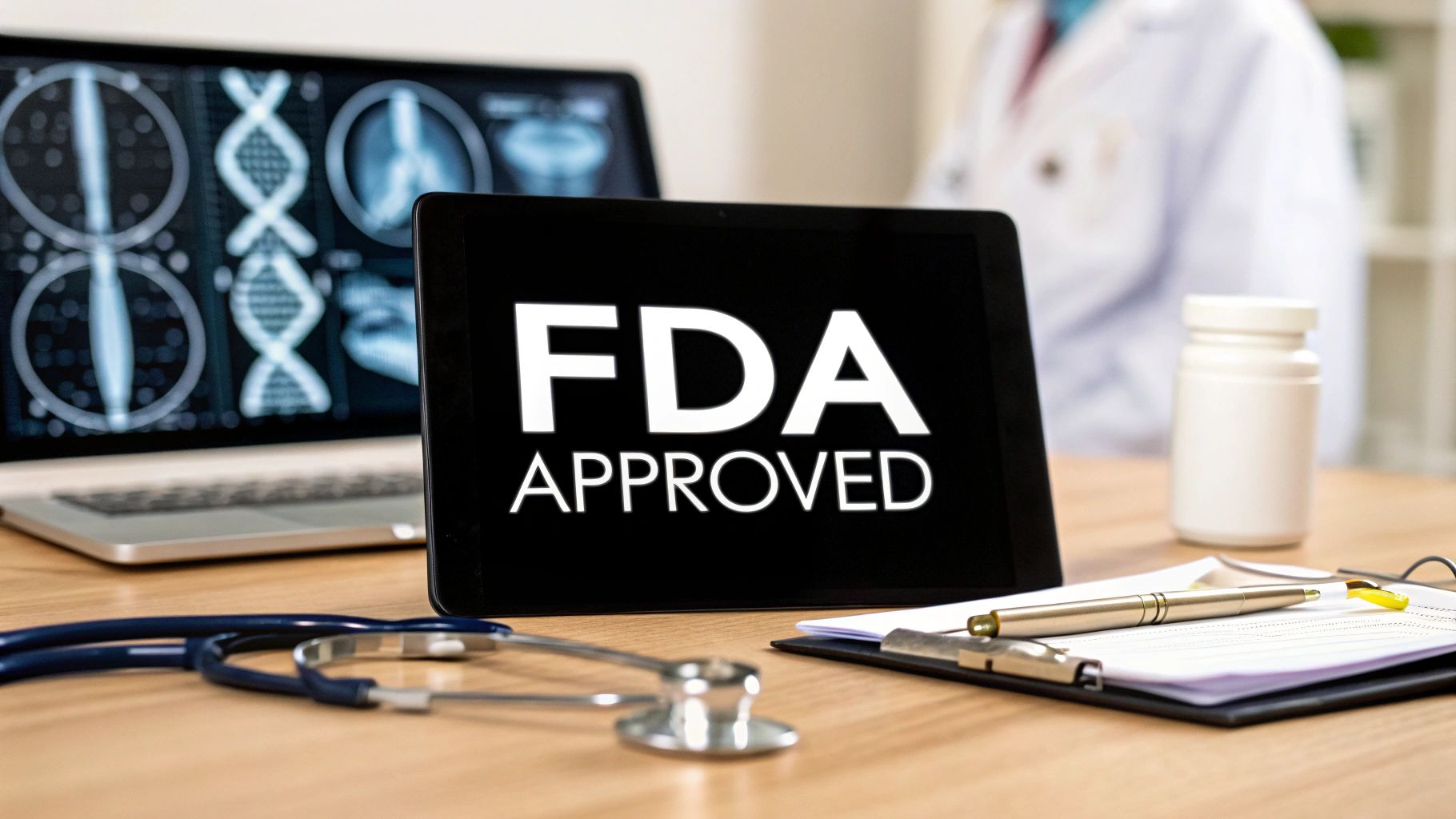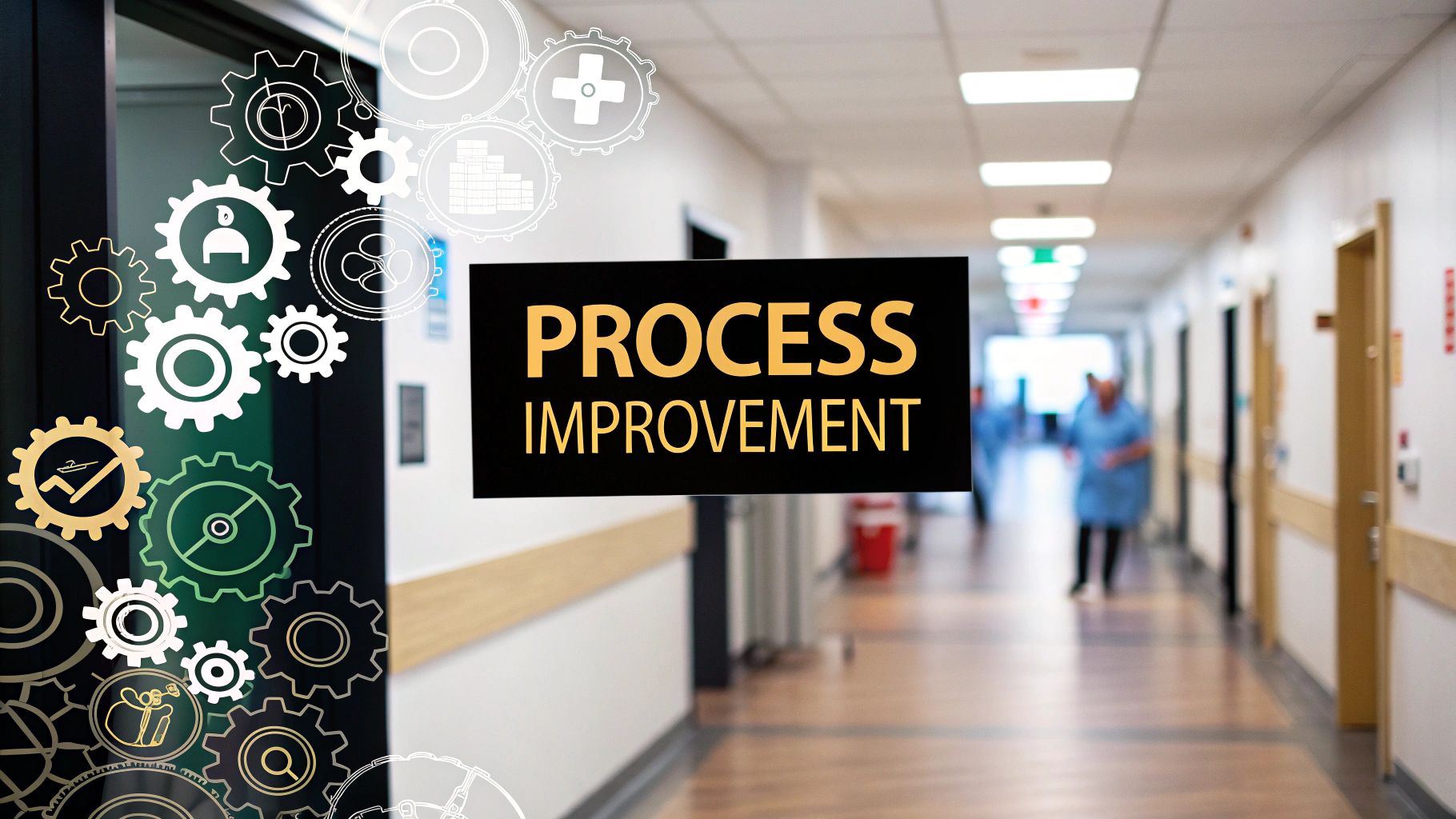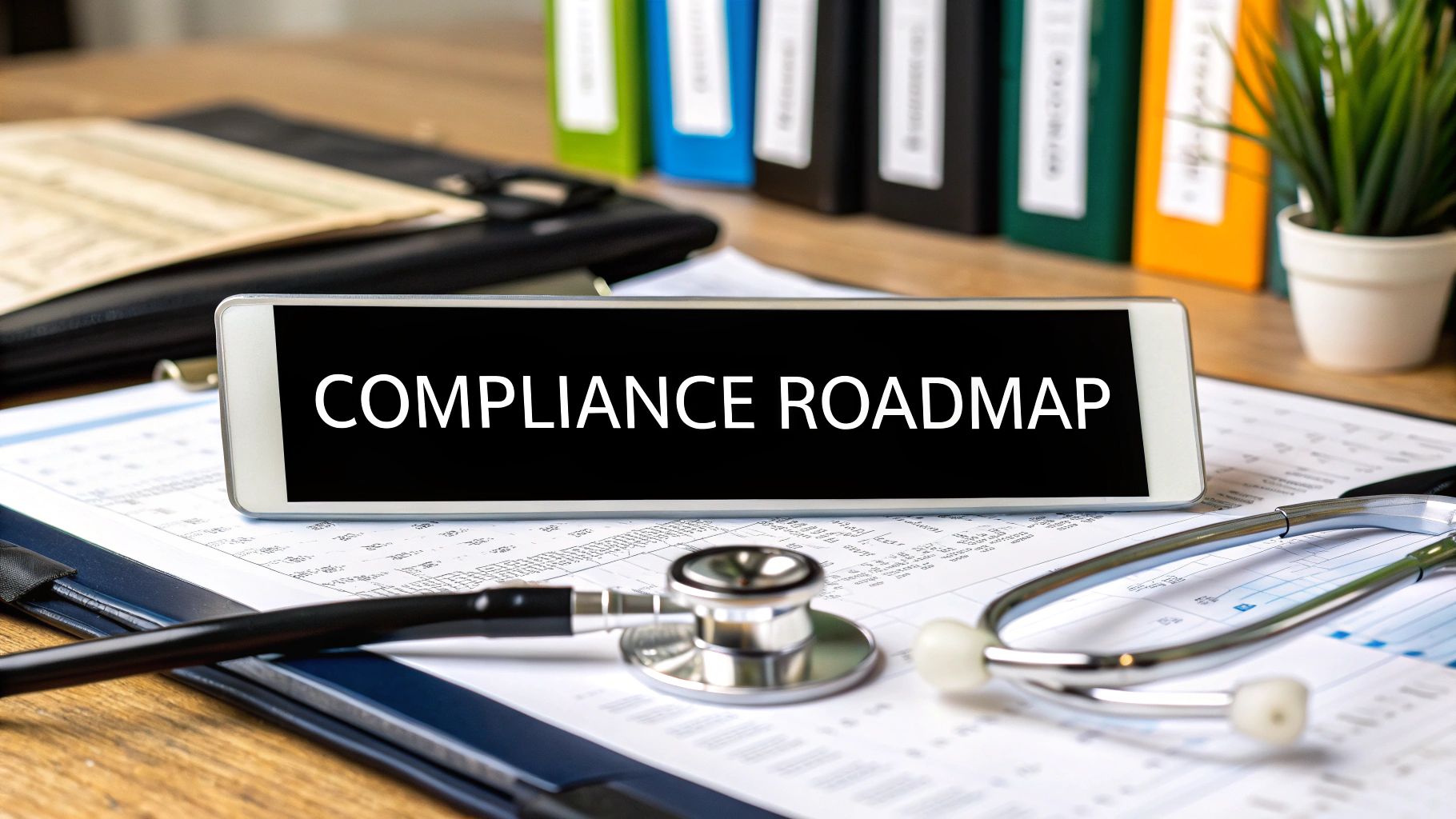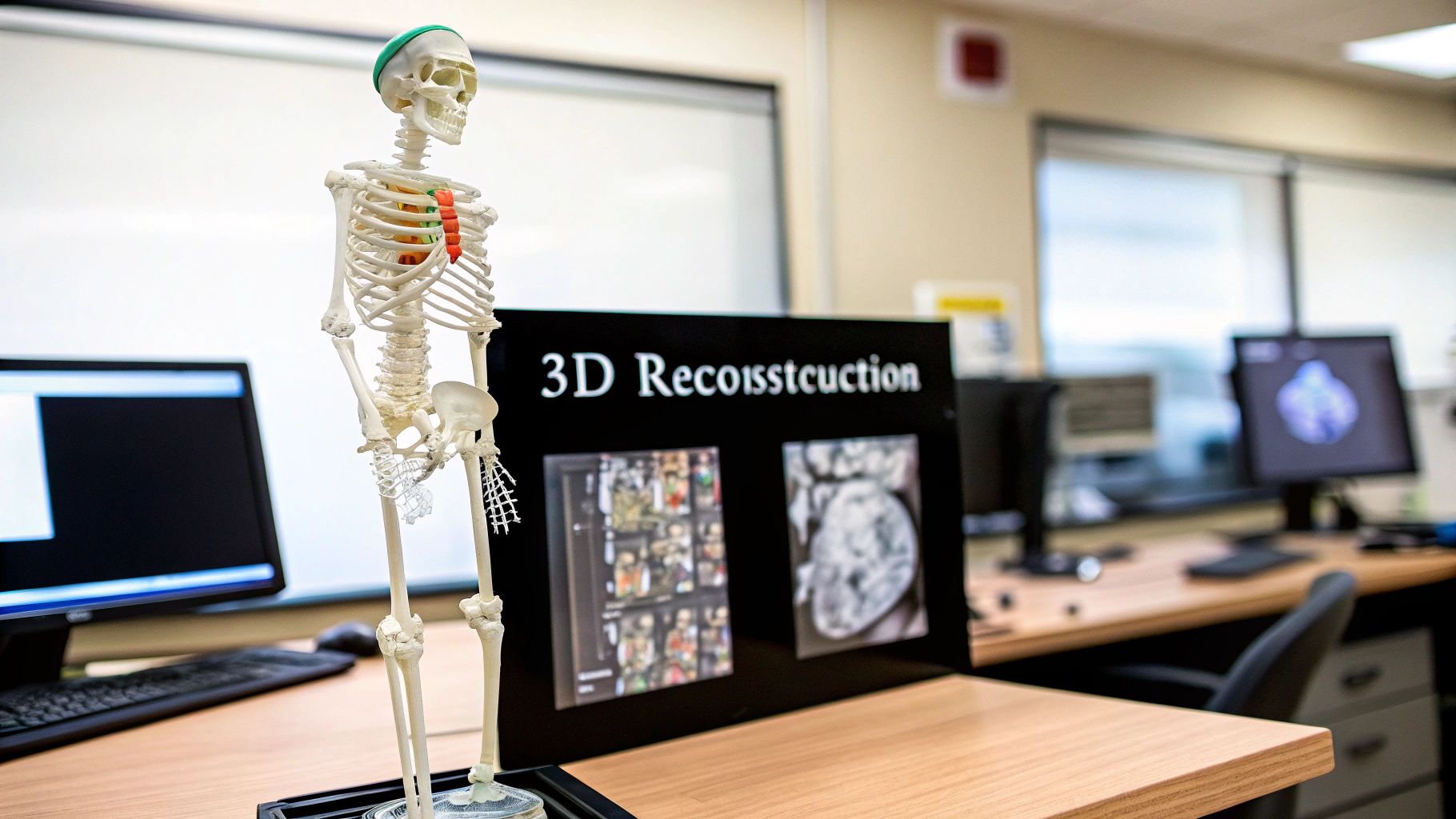Decoding the FDA Medical Device Approval Landscape
Navigating the FDA approval process for medical devices can feel like charting unknown territory. A clear understanding of the regulatory landscape is essential for a successful product launch. This means not only meeting the requirements but also strategically positioning your device within this complex system. This section breaks down how the FDA evaluates medical devices and how that impacts your development strategy.
Understanding Device Classification
The FDA groups medical devices into three classes—Class I, Class II, and Class III—based on their inherent risk. This classification determines the regulatory pathway your device must follow. Class I devices, such as bandages and examination gloves, are considered low risk and are typically subject to general controls. Class II devices, like powered wheelchairs and infusion pumps, pose a moderate risk and require special controls, including performance standards and post-market surveillance.
Class III devices, such as implantable pacemakers and heart valves, carry the highest risk and require premarket approval (PMA). This PMA process demands rigorous evidence demonstrating the device's safety and effectiveness. The underlying principle is simple: the higher the risk to the patient, the more stringent the FDA's scrutiny.
To further clarify the FDA's classification system, let's examine the following table:
FDA Medical Device Classification System
Comparison of the three FDA device classes and their regulatory requirements
| Device Class | Risk Level | Examples | Regulatory Controls | Submission Type |
|---|---|---|---|---|
| Class I | Low | Bandages, examination gloves | General controls | General controls |
| Class II | Moderate | Powered wheelchairs, infusion pumps | Special controls, performance standards, post-market surveillance | 510(k) |
| Class III | High | Implantable pacemakers, heart valves | Premarket Approval (PMA) | PMA |
This table summarizes the key differences in regulatory controls and submission types for each device class, highlighting the increasing stringency with rising risk levels.
The Importance of Documentation
Meticulous documentation is paramount for FDA approval. Your submitted documents must clearly demonstrate the safety and effectiveness of your device. This includes data from preclinical testing, clinical trials, and detailed manufacturing information. Consider each document as a vital piece of a puzzle, forming a comprehensive picture of your device's safety and efficacy. For establishing robust compliance systems, consider exploring Software Quality Assurance Best Practices. These best practices can help establish a structured, documented approach to quality, crucial for navigating FDA requirements.
Common Misconceptions
Many developers mistakenly view regulatory strategy as a secondary concern. However, integrating regulatory considerations from the outset streamlines the entire approval process. One common misconception is assuming a device similar to an existing one will face fewer regulatory hurdles. This isn't always the case, as even minor design changes can significantly impact classification and requirements. Another misconception is believing that merely meeting the minimum requirements guarantees approval. The FDA places a high value on quality data and a thorough understanding of the device’s risks and benefits.
The FDA's Role in Ensuring Safety and Effectiveness
The U.S. Food and Drug Administration (FDA) plays a critical role in safeguarding public health by rigorously evaluating medical devices. In 2022, the FDA authorized nearly 6,000 medical device submissions. This included 3,229 510(k) premarket notifications, 216 Emergency Use Authorizations (EUAs) related to COVID-19, 23 De Novos, and 22 Premarket Approvals (PMAs) along with 2,126 PMA supplements. The FDA oversees over 6,700 medical device product categories, with approximately 27,000 facilities involved in their production globally. This data underscores the FDA’s dedication to ensuring devices meet strict safety and efficacy standards. You can find more detailed statistics here. Understanding the volume of submissions handled by the FDA emphasizes the need for a well-prepared and strategically planned application.
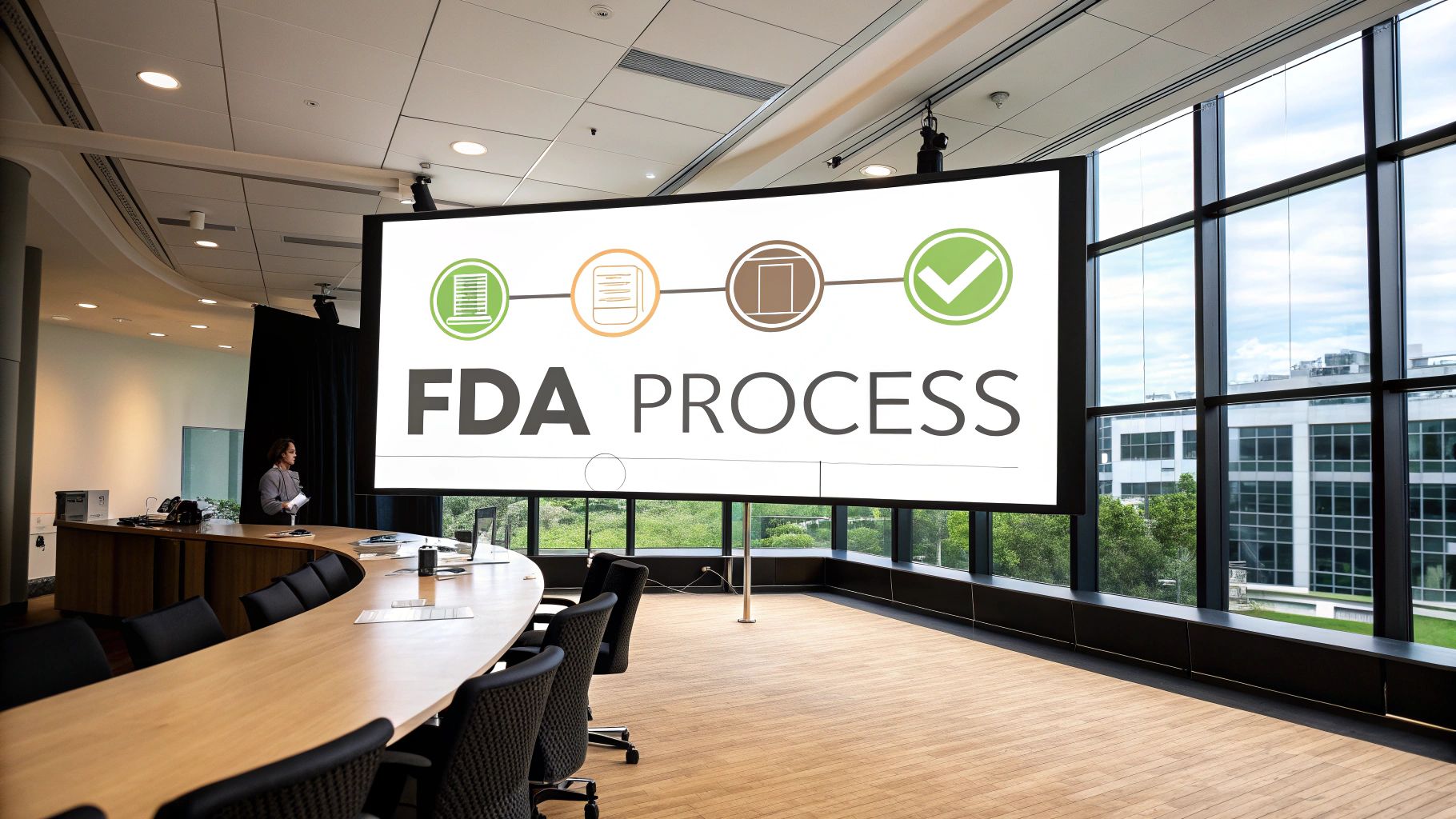
By understanding the FDA approval landscape and proactively addressing regulatory requirements, medical device developers can significantly improve their chances of a successful market entry. This proactive approach not only conserves time and resources but also builds public trust in your device’s safety and performance.
Mastering the 510(k) Pathway: Beyond Basic Compliance
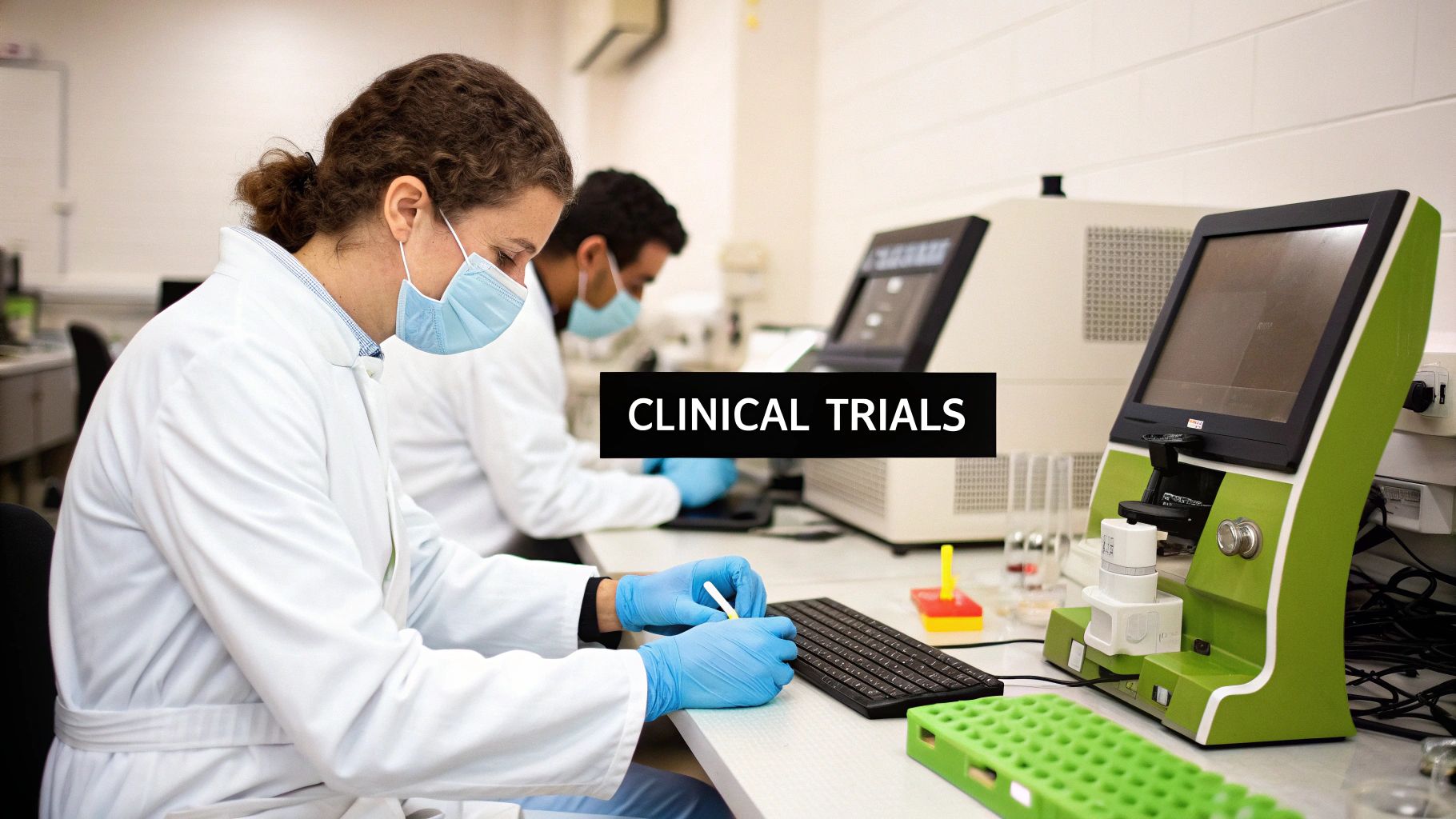
The 510(k) pathway is a well-trodden route to FDA approval for medical device manufacturers. However, simply meeting the minimum requirements isn't enough. True success requires a strategic approach that goes beyond checking boxes and delves into effectively demonstrating the safety and efficacy of your device.
Identifying Your Predicate Device: The Foundation of Your 510(k)
At the heart of a 510(k) submission lies the substantial equivalence claim. This involves demonstrating that your device is substantially equivalent to a predicate device. A predicate device is a legally marketed device that isn't subject to Premarket Approval (PMA). Choosing the right predicate is paramount. It’s not just about finding a similar device; it’s about selecting one that strategically positions your device for approval.
The right predicate enables you to effectively demonstrate equivalence in terms of intended use, technological characteristics, and performance testing. A poorly chosen predicate, on the other hand, can lead to significant delays and a cascade of additional information requests from the FDA.
Presenting Compelling Performance Data: Anticipating Reviewer Concerns
Effective data presentation is essential for a successful 510(k) submission. The FDA doesn’t simply want data; they want a clear understanding of how that data supports your substantial equivalence claim. This means anticipating potential reviewer questions and addressing them proactively.
For example, if your device incorporates a novel material, providing data comparing its biocompatibility to that of the predicate device can preemptively address concerns. Presenting your data clearly and concisely, using tables and graphs to highlight key findings, further strengthens your submission. Understanding expected usage loads is crucial. Load testing strategies can offer valuable insights into assessing device performance under stress.
Developing Robust Testing Protocols: Meeting FDA Expectations
Your testing protocols are a critical component of your 510(k) submission. They should not only demonstrate the safety and effectiveness of your device but also align with FDA expectations. This requires a thorough understanding of relevant guidance documents and industry standards.
For example, if your device is a diagnostic tool, ensuring adherence to established standards for accuracy and reliability is critical. A well-designed testing protocol anticipates potential FDA scrutiny and proactively provides the evidence needed to support your claims. The 510(k) process requires demonstrating substantial equivalence to a legally marketed device not subject to PMA. In 2022 and 2023, the FDA cleared 3,229 and 3,326 510(k)s, respectively. The more stringent PMA process, typically for Class III devices, requires extensive review. Learn more about medical device databases here.
Responding to Additional Information Requests: Staying on Track
Even meticulously prepared 510(k) submissions can result in additional information requests from the FDA. Responding to these requests efficiently is crucial to maintain momentum and avoid delays. Provide not just the requested information, but also a clear explanation of how it addresses the FDA's concerns.
A strategic response can transform a potential setback into an opportunity to strengthen your submission and bolster reviewer confidence.
Beyond the Basics: A Strategic Approach
Mastering the 510(k) pathway transcends simply meeting minimum requirements. It requires understanding the nuances of the process, anticipating potential roadblocks, and crafting a strategic approach. By focusing on key areas—predicate selection, data presentation, robust testing protocols, and responding effectively to information requests—you can position your device for a smoother, more efficient FDA approval process.
This proactive approach not only helps secure market access but also establishes a solid foundation for ongoing compliance and sustained market success.
Before submitting a 510(k), it's essential to meticulously prepare and organize all necessary components. The following checklist can help you ensure a complete and well-structured submission:
510(k) Submission Preparation Checklist: Key components required for a complete 510(k) submission to the FDA
| Submission Component | Purpose | Common Pitfalls | Best Practices |
|---|---|---|---|
| Cover Letter | Introduces the submission and summarizes key information. | Lack of clarity or missing key details. | Clearly state the device's intended use and highlight key features. |
| Indications for Use | Specifies the intended use of the device. | Overly broad or vague language. | Use precise and specific language that aligns with the device's labeling. |
| Device Description | Provides a detailed description of the device, including its components and functionality. | Insufficient detail or unclear explanations. | Include clear diagrams, schematics, and technical specifications. |
| Substantial Equivalence Discussion | Demonstrates how the device is substantially equivalent to a predicate device. | Weak comparison or insufficient evidence. | Provide a detailed comparison of the device's features, performance, and intended use to the predicate device. |
| Performance Testing Data | Presents the results of performance testing conducted on the device. | Inadequate testing or poorly presented data. | Conduct comprehensive testing and present data clearly using tables and graphs. |
| Biocompatibility Information | Demonstrates the biocompatibility of the device's materials. | Missing or incomplete biocompatibility data. | Conduct appropriate biocompatibility testing and provide detailed reports. |
| Labeling | Includes all labeling for the device, such as instructions for use and packaging inserts. | Inconsistent or inaccurate labeling. | Ensure labeling is clear, concise, and accurate. |
This checklist highlights the essential elements of a 510(k) submission. By carefully addressing each component, you can increase your chances of a successful and timely FDA clearance.
Navigating PMA: The Gold Standard of Device Approval
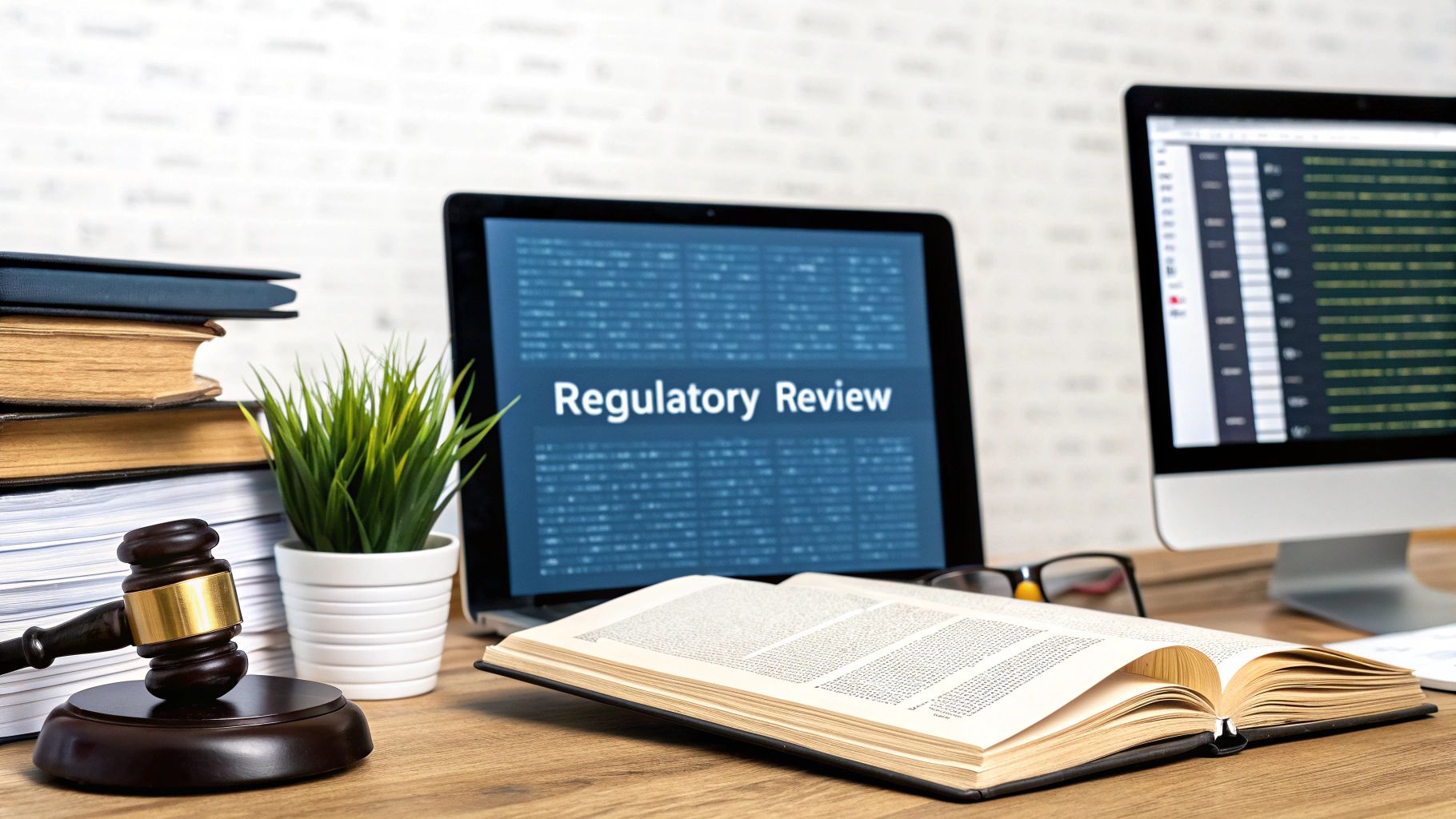
The Premarket Approval (PMA) pathway is the FDA's most demanding process for medical devices. Reserved for Class III medical devices, this thorough evaluation focuses on products that are life-sustaining, critical for preventing health impairment, or pose a potential, unreasonable risk of illness or injury. Successfully navigating this process requires more than just checking boxes; it demands a strategic, comprehensive approach.
Designing Clinical Studies That Shine: FDA Requirements and Market Positioning
Clinical studies are the foundation of every PMA application. They provide the evidence needed to showcase a device's safety and efficacy. Leading medical device companies, however, recognize that these studies do double duty. They not only fulfill FDA requirements but also play a crucial role in establishing a device's market position.
A well-executed clinical trial, for example, can showcase not only a device’s effectiveness, but also aspects like ease of use or improved patient outcomes compared to existing treatments. This information becomes a powerful tool when introducing the new device to the market. Furthermore, thorough planning and execution of clinical studies can prevent expensive and time-consuming revisions later in the PMA process.
Mastering the Art of Risk-Benefit Analysis: Resonating with Reviewers
All medical devices, even those offering substantial benefits, carry inherent risks. The PMA process requires a thorough risk-benefit analysis, clearly outlining both the potential harms and advantages associated with device use. Presenting this analysis effectively is crucial for gaining approval.
This involves more than just listing risks and benefits. It requires framing the analysis in a way that resonates with FDA reviewers. This means showing a thorough understanding of the patient population the device is intended for, the clinical need it addresses, and how its benefits outweigh its risks, especially when compared to alternatives. A clear and compelling risk-benefit analysis strengthens the entire PMA application and builds confidence among reviewers.
Managing the PMA Process: Resources and Budgetary Considerations
The PMA process is well-known for its resource demands, both in terms of time and budget. Successful companies, however, employ practical strategies to manage these challenges effectively without jeopardizing their financial stability. This includes carefully allocating resources, creating realistic timelines, and utilizing external expertise when necessary.
For example, collaborating with regulatory consultants can offer valuable guidance and streamline the submission process. Efficient project management, coupled with proactive communication with the FDA, can prevent unnecessary delays and keep the project on budget. This proactive approach to resource management contributes significantly to a more efficient and successful PMA journey.
Anticipating and Addressing FDA Questions: Proactive Strategies for Success
Unanticipated questions from FDA reviewers often cause delays in PMA applications. This can extend the approval timeline and strain resources. Forward-thinking companies, however, anticipate and address these potential hurdles proactively.
This involves conducting detailed internal reviews of the PMA application before submission, identifying potential areas of concern, and preparing clear, concise responses to anticipated questions. This proactive approach minimizes surprises during the review process, contributing to a smoother and more efficient path to approval. Much like a chess player anticipating their opponent's moves, a strategic PMA approach involves preparing for potential FDA inquiries.
Smooth Sailing or Stormy Seas? Understanding the PMA Review Process
The path a PMA application takes through the FDA review process can be unpredictable. Some applications sail through smoothly, while others encounter delays and numerous rounds of questioning. Understanding the factors that influence this variability is crucial for a successful submission.
Factors like the clarity of the submitted data, the thoroughness of the risk-benefit assessment, and how quickly the applicant responds to FDA inquiries all play a significant role in determining the speed and efficiency of the review. By learning from past experiences, both successes and challenges, companies can optimize their PMA submissions and improve their chances of a timely and positive outcome. Staying informed about current FDA guidelines and regulations, consulting with regulatory experts, and maintaining strong relationships with FDA reviewers are essential components of this proactive approach.
Strategic Pathways: De Novo, Breakthrough, and Emergency Use

Beyond the typical 510(k) and PMA pathways for FDA approval, medical device manufacturers can explore alternative routes. These strategic pathways—De Novo, Breakthrough Device Designation, and Emergency Use Authorization—offer unique advantages for innovative devices seeking a more efficient regulatory journey.
The De Novo Pathway: Classifying Novel Devices
The De Novo pathway caters specifically to novel medical devices lacking a substantially equivalent predicate. This pathway offers a route to classification and market entry for devices employing new technologies or addressing unmet medical needs.
De Novo is particularly beneficial for low to moderate-risk devices. It essentially creates a new classification within the FDA system, establishing a precedent for future devices. The process involves submitting a De Novo request containing detailed safety and effectiveness data. Upon approval, the device receives a classification and can be marketed, paving the way for similar devices to follow.
Breakthrough Device Designation: Accelerating the Review Process
Breakthrough Device Designation can be transformative for devices with the potential to be life-saving or life-altering. This designation prioritizes the review of devices designed to treat or diagnose life-threatening or irreversibly debilitating conditions.
Manufacturers with this designation benefit from increased communication and collaboration with FDA reviewers. This accelerated interaction facilitates issue resolution and speeds up the overall approval process, ensuring patients receive these critical devices faster. The FDA also provides ongoing feedback and guidance, improving the chances of a successful outcome. The FDA has shown a growing trend in authorizing novel medical devices. For more detailed statistics, see this MedTech Dive article. In 2023, the FDA authorized 124 new devices, excluding emergency use authorizations, and designated 167 devices as Breakthrough Devices, up from 135 in 2022. This upward trajectory highlights the increasing significance of medical device innovation and the FDA's support for it.
Emergency Use Authorization (EUA): Addressing Public Health Crises
During public health emergencies, such as pandemics or natural disasters, the FDA can issue Emergency Use Authorizations (EUAs). This allows the use of unapproved medical products, or unapproved uses of approved products, to diagnose, treat, or prevent serious or life-threatening diseases or conditions during the crisis.
EUAs are temporary and issued only when no adequate, approved, and available alternatives exist. Numerous diagnostic tests and ventilators received EUAs during the COVID-19 pandemic, demonstrating this pathway’s critical role in addressing urgent public health needs. The EUA process enables the FDA to respond rapidly to evolving crises, ensuring timely access to potentially life-saving medical devices.
Strategic Advantages: Competitive Edge and Regulatory Compliance
Utilizing these strategic pathways—De Novo, Breakthrough Device Designation, and EUA—offers manufacturers significant competitive advantages. They can expedite FDA approval and enhance market positioning by emphasizing a device’s novelty and potential to improve patient outcomes. However, it's crucial to remember that these pathways still demand adherence to strict regulatory requirements. Successful companies take a proactive approach, carefully assessing their device's eligibility for these pathways and preparing comprehensive submissions that meet all FDA criteria. This blend of strategic planning and regulatory compliance maximizes the likelihood of success, enabling innovations to reach those who need them most.
Crafting Submissions That Actually Impress FDA Reviewers
Getting your medical device approved by the FDA takes more than just checking off the basic requirements. You need a submission that truly stands out, showing reviewers you understand the regulations and have anticipated their potential questions. This means careful preparation, clear communication, and a proactive strategy that builds confidence in your device's safety and effectiveness.
The Anatomy of a Successful Submission: Anticipating Reviewer Needs
What separates a submission that gets quick approval from one that gets stuck in a back-and-forth with reviewers? Often, it’s anticipation. The best submissions don't just answer questions; they prevent them by addressing potential issues before they're even raised. This proactive approach saves time and demonstrates a deep understanding of the FDA's expectations.
For instance, including a detailed risk-benefit analysis that addresses potential safety concerns can significantly speed up the review process. This shows your commitment to patient safety and makes your application stronger. Similarly, providing clear, concise answers to frequently asked questions upfront can boost reviewer confidence and reduce the need for more information later.
Presenting Complex Data: Clarity and Accessibility
FDA reviewers go through enormous amounts of data. Presenting your information clearly and accessibly is essential. Use visuals like tables and graphs to highlight key findings. Organize your submission logically so it’s easy to navigate. Think of your submission as a story, guiding reviewers through the evidence in a way that’s easy to follow and understand.
When presenting clinical trial data, for example, use clear visuals to show key endpoints and statistical significance. This makes the data easier to understand and helps reviewers quickly grasp the meaning of your findings. A detailed table of contents, along with descriptive headings and subheadings, will also make navigation easier.
Documenting Test Methods: Building Trust and Transparency
Documenting your testing methods thoroughly is vital for building credibility and transparency. Reviewers need to see exactly how you reached your conclusions to ensure your data is reliable and valid. Provide detailed descriptions of your test protocols, including the reasoning behind your methods and any changes from standard procedures.
If you are using a new testing method, clearly explain its scientific basis and how it was validated. This builds trust and demonstrates your commitment to rigorous scientific practices. Providing detailed documentation of your quality control measures can further increase reviewer confidence.
Pre-Submission Meetings: Gaining Valuable Feedback
Meeting with the FDA before your formal submission can be incredibly helpful. These meetings let you discuss your submission with reviewers and get crucial feedback early on. This can help you spot and fix potential problems before they become major obstacles.
Use these meetings to present your testing approach, data analysis plan, and proposed labeling. Getting feedback on these key elements upfront can significantly reduce delays and requests for more information. This shows you are committed to a transparent and collaborative approach to the FDA approval process.
Responding to Reviewer Questions: Resolution, Not Just Answers
FDA reviewers will inevitably have questions. Successfully navigating this process means not just answering these questions but resolving the underlying concerns. Provide complete responses that go beyond simple answers and demonstrate a thorough understanding of the issues.
For example, if reviewers have questions about your statistical analysis, don't just give them a revised analysis. Explain the reasons behind your changes and how they address the reviewers' specific concerns. This shows you’re willing to work constructively with the FDA and builds confidence in your ability to address their questions.
Building Reviewer Confidence Through Documentation: A Key to Success
Reviewer confidence is based on trust, and trust is built through thorough, transparent documentation. Carefully document every part of your development and testing process, from the initial design to the final product labeling. This not only fulfills FDA requirements but shows your commitment to quality and thoroughness.
By using these strategies, you can create a submission that goes above and beyond the FDA’s expectations. This approach increases your chances of approval and sets you up for a successful product launch. A submission that impresses FDA reviewers is one that prioritizes clarity, transparency, and a deep understanding of the regulatory landscape. This focus on quality and anticipation leads to a smoother, more efficient approval process, ultimately benefiting both your company and the patients you serve.
Beyond Approval: Building Sustainable Compliance Systems
FDA approval for a medical device is a significant milestone, but it's not the end of the road. It's actually just the beginning of a journey filled with ongoing regulatory obligations. These responsibilities, if managed well, can solidify your device's long-term success. However, if neglected, they can lead to significant setbacks. Forward-thinking companies understand this and prioritize building sustainable compliance systems from the very start.
Post-Market Surveillance: Identifying Issues Before They Escalate
Post-market surveillance is more than just a regulatory checkbox; it's a critical process for identifying potential device problems before they escalate. Effective surveillance requires proactive data analysis to identify trends and potential safety signals. It's a continuous feedback loop that informs necessary device modifications or labeling updates to ensure ongoing safety and efficacy.
For instance, if post-market data shows an unexpected increase in adverse events linked to a specific component, manufacturers can investigate the root cause. They can then implement corrective actions such as design improvements, enhanced user training, or even a product recall if needed. This proactive approach not only protects patients but also safeguards a company's reputation and market position.
Managing Device Modifications: Balancing Innovation with Regulatory Requirements
The medical device field is constantly changing. Manufacturers often need to modify their devices to incorporate new technologies, improve performance, or address issues identified through post-market surveillance. However, these modifications must be carefully managed to maintain compliance with FDA regulations.
This involves understanding when a modification requires a new 510(k) submission or a Premarket Approval (PMA) supplement. A change in the device's intended use or a significant alteration to its core technology would likely trigger a new regulatory submission. Minor changes, like software updates or cosmetic alterations, may not require a full resubmission. Staying current with FDA guidance and proactively engaging with the agency is essential for managing these changes effectively.
Maintaining Quality Systems: FDA Expectations and Business Needs
Robust quality systems are fundamental to any successful medical device company. These systems cover all aspects of design, manufacturing, testing, and distribution. They ensure that devices consistently meet strict quality and safety standards. Maintaining these systems requires ongoing vigilance and a commitment to continuous improvement.
This means regularly reviewing and updating quality procedures, implementing thorough employee training programs, and conducting periodic audits. A well-maintained quality system not only satisfies FDA requirements but also optimizes business operations, reduces manufacturing errors, and builds customer confidence. It’s a beneficial approach for both regulatory compliance and business success.
Preparing for FDA Inspections: Ensuring a Smooth Process
FDA inspections are a standard part of medical device regulation. Being prepared can significantly reduce stress and ensure a positive outcome. Preparation involves thoroughly reviewing quality system documentation, ensuring staff are trained on inspection procedures, and having a designated point of contact for FDA inspectors.
This preparation turns a potentially stressful event into a chance to showcase the strength of your compliance systems and build a positive relationship with the FDA.
Efficient Adverse Event Reporting: Timely and Accurate Documentation
Adverse event reporting is a vital part of post-market surveillance. Manufacturers must report any adverse events related to their devices to the FDA. Efficient reporting requires a well-defined process for collecting, evaluating, and reporting these incidents.
This includes creating a clear reporting pathway for internal staff and external users, establishing criteria for evaluating the seriousness of events, and ensuring timely submission of reports to the FDA. Efficient adverse event reporting not only fulfills regulatory requirements but also provides valuable information about device performance and potential safety concerns.
Scaling Compliance Processes: Adapting to Company Growth
As your company grows, so will your compliance obligations. Sustainable compliance systems must be scalable, adapting to increasing production, expanding product lines, and evolving regulatory demands. This means implementing systems and procedures that can be easily expanded as your business grows.
For example, using automated reporting tools for adverse events and post-market surveillance can streamline data management and ensure consistent reporting accuracy. Investing in robust quality management software can centralize documentation and facilitate efficient collaboration across departments.
Building sustainable compliance systems is an investment in long-term success. By prioritizing post-market surveillance, managing device modifications effectively, maintaining robust quality systems, preparing for inspections, streamlining adverse event reporting, and designing scalable processes, medical device companies can not only meet regulatory requirements but also enhance product safety, build customer trust, and create a foundation for continued innovation.
Ready to enhance your medical device development? PYCAD offers expertise in medical imaging and computer vision to optimize devices and improve operational efficiency. Visit PYCAD today to learn more.
